When you go shopping do you look for certain brands? Nike for sports shoes, Prada for bags, and Starbucks for coffee? Yes! That’s the power of brands. Whenever we go out to buy certain products, some well-known brands often pop into our minds. Brand Equity is understood as the additional commercial value that a product or service receives because of the existing brand awareness.
We all know that the product or service of a well-recognized brand gets better acceptance in the target niche compared to any lesser-known brand.
By definition, a brand is a name, symbol, or design under which goods are sold. There is a definite value attached to this name that draws customers towards the brand’s goods and services.
David Aaker (Father of Modern Branding), an American organizational theorist, consultant and Professor Emeritus at the University of California, Berkeley’s Haas School of Business says-
The most important assets of any business are intangible: its company name, brands,
symbols and slogans, and their underlying associations, perceived quality, name awareness, customer base and proprietary resources such as patents, trademarks and channel relationships. These assets, which comprise brand equity, are a primary source of competitive advantage and future earnings.
In this article, we are going to understand brand equity and how it is playing a big role in generating profits for businesses.
What is Brand Equity?
With the help of branding, brands design as well as manage their products or services in order to increase their net worth. This is also commonly known as brand management. Brand management or branding contribute significantly to the success of a company in the market.
To understand brand equity, it is important to note the components which contribute to its creation. It is considered as the set of liabilities and assets which are linked to the brand, its symbol as well as its name.
The assets, as well as liabilities, are primarily grouped into five categories. These are perceived quality, brand loyalty, brand associations, name recognition, and other brand assets. These brand assets include trademarks, patents, and relationships with their distribution channels. These are further discussed in detail later in the article.
In the simplest terms, brand equity is brand value. A value that is associated with a brand name that enables a company to charge premium pricing for it.
Brand equity can be seen as a separate asset that is totally comprised of brand value. This value is the sum of the assets and liabilities that are generated as a result of the relationship marketing with the customers of the respective brand.
Download Detailed Brochure and Get Complimentary access to Live Online Demo Class with Industry Expert.
Though this is an entirely intangible thing, the effect of brand equity is reflected in the financial books of the company in terms of prices, market share, profitability, and demand.
Brand equity brings forward higher profit margins. This enables reductions in promotions as well as premium pricing. It also offers the brand several growth opportunities through brand extensions. It also helps the brand achieve a privileged position while enjoying various marketing programs.
In today’s world, where there are numerous variants of a particular product, brand equity can become the differentiating factor for businesses.
After knowing what is brand equity, let us now have a look upon the ways through which brand equity can be measured.
Measuring Brand Equity
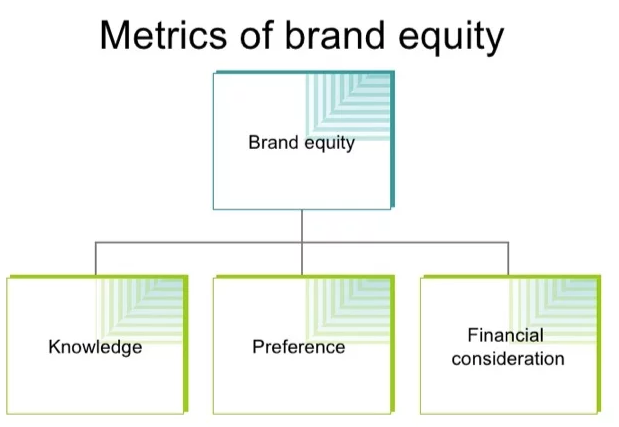
Brand equity is the worth of the brand that can be measured by various means. Some of them are discussed below:
(i) The premium price that a company can charge on its products as compared to the price of the unbranded products.
(ii) The price of the company shares.
(iii) The more sales volume generated by a brand over the sales volume of unbranded products that are in the same product category.
(iv) The ROI enjoyed by the shareholders.
(v) The projected earning potential of the brand in the future.
(vi) The brand image and its value on various parameters.
Brand Equity Components
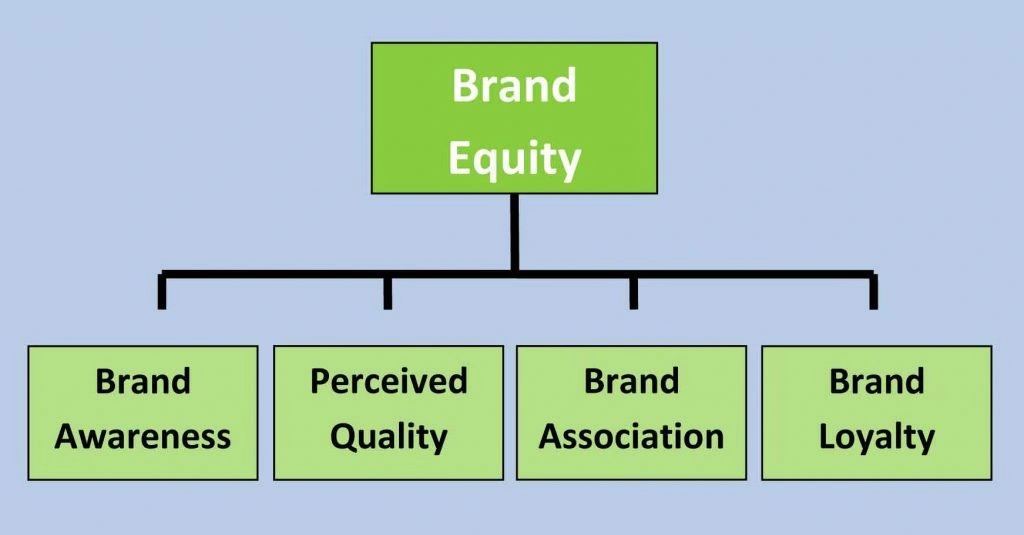
The brand equity model comprises 5 components. Let’s have a close look at what each of these components is and how they contribute to brand equity.
1. Brand Awareness
The first step of the brand equity model towards brand building is brand awareness.
Brand awareness essentially means that customers know about the brand and are familiar with the product category of the brand. There are several levels of brand awareness.
(i) The lowest level of brand awareness is when the customers have to be reminded of the existence of the brand and the product category in which it competes.
(ii) A level higher than the lowest level is the aided recall stage. Here, the customers can recognize the brand from a list of brands occupying the same category.
(iii) The next level is the ‘unaided recall’ stage. Here, the customer can come up with the name of the brand without any external help.
(iv) The highest level of brand awareness is the ‘top of mind recall’. In this stage, the first name that the customer recalls is the name of the brand upon mentioning the product category.
2. Brand Associations
Anything be it features, quality, color or others that customers associate a brand with are called brand associations, and it is the next component of the brand equity model.
Customers can form a brand association based on their interaction with the company’s employees, prices at which the brand’s products are sold, celebrities who endorse the brand, the advertisements promoting the brands. There can be several factors constituting brand associations.
It is absolutely essential to have strong and positive brand associations. Brand associations are not just the result of the direct interaction of the customers with the brand. It can also result from what others say to the customers.
Therefore, it is necessary that a company plans its interaction with every customer, media, government, and employees in an intelligent manner.
3. Perceived Quality
Even though perceived quality also falls under the category of brand association, it is given a distinct status because of its importance.
As the name suggests, perceived quality is what customers think about the overall brand quality.
Quality is judged by customers based on certain parameters.
These parameters are those which are important to them. Further, these parameters of a brand are assessed by comparing the quality of offerings of the brand’s competitor.
Quality is important for both brands and customers. It is the criteria on which companies can decide what pricings to keep.
Quality can also be used by a brand to position itself. Usually, a brand that offers superior quality than others keeps premium pricings.
4. Brand Loyalty
Brand loyalty is what every brand strives for, and that is why it is one of the most important components of brand equity model.
Brand loyalty results in repetitive purchases by a customer over time and also results in less marketing expenses.
Among all the components of brand equity, brand loyalty is considered to be the most important one. This is because all the components in this list take place before a purchase is made. However, brand loyalty comes after the purchase and is the most reliable indicator of brand equity because feelings of loyalty are instilled only post-purchase.
By instilling loyalty a brand can have more purchases from the same customer in the future.
Brand loyalty is the core of business success for a company. It allows the company to survive and also introduces new products in its portfolio which can be targeted at the loyal customer base.
Brand loyalty gives an advantage to a company to have a stronger position with its channel partners. When there is a good demand for a company’s products the retailers just have to make it available to the customers rather than pushing sales.
5. Some other Brand assets
The other brand assets are proprietary brand assets that the brand equity model of a company comprises.
These comprise of trademarks, patents, and channel partner relationships.
Proprietary brand assets contribute to brand equity because they prevent competitors from harming the business as well as enable a brand to maintain its loyal group of customers.
These assets protect the differentiating factors of a brand and enable the brand to maintain its brand image.
Is Brand Equity that important?
In short, yes, brand equity holds significant importance for a company. This is because it not only increases the market share of the company; it also augments its valuation within the market place.
- Increases market share: A well-defined and good brand equity increases customer loyalty and thus, results in customers opting for the brand over the others. This helps in increasing its market share.
- Enables premium pricing: A positive brand equity can help the company charge more for its product or services as compared to the actual market price.
- Assets: As discussed earlier, brand equity comprises of intangible assets of the company (organization). These, similar to other assets, can be sold, leased, or licensed to others.
- Brand extensions: If a company has positive brand equity, it becomes easier for them to introduce new products or products lines into the market. For instance, Apple began with the Mac OS (Operating System). As the brand equity grew, it was easily able to convert its equity with iPhones.
Brand Equity Examples to understand Brand Equity Models
Till now, all you learned about was what brand equity is and how it is measured. Now, let’s jump into the power of brand equity and see it in action in the real world.
Apple Brand Equity Examples

Apple is the best brand to fathom the power of brand equity. Apple is the leading tech giant that is well-known for its high-quality range of electronics such as iPhone, iPad, Macbook, etc. This brand has a strong influence on tech lovers and has an extremely loyal customer base.
Though this brand doesn’t offer many different features compared to other electronic brands, still it comes with a premium price tag. Some people even buy Apple’s products just to join the group of Apple users. This is the level of brand equity that every brand aspires to achieve.
Starbucks Brand Equity Examples
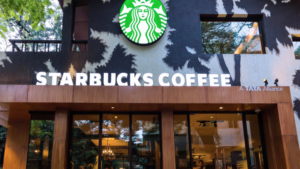
A consumer case study was conducted on Starbucks customers. It was seen that customers chose Starbucks not just because of its good qualities but also because of its brand.
Starbucks is popular across the globe for its specialty coffees and Arabica coffee beans. It has around 21000 stores around the world and is regarded as the 5th most desirable brand in the world. The brand has also built a good image of itself because of its social pledge.
Porsche Brand Equity Examples
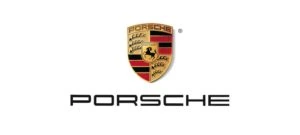
Porsche has strong brand equity in the automobile industry. This is a luxury brand that promises to offer not just a product but an experience. Many people aspire to own a Porsche not only for its high-quality nature but also for their desire to increase their social status.
Porsche ranks above other automobile brands such as BMW and Mercedes. It has secured the 3rd rank in the luxury car category.
Facebook is a prevalent social networking site. There are several instances of social networking sites which have come and gone. However, Facebook has managed to stay put and has been consistent. The platform and the company have successfully managed to build such a loyal set of customers that most of them do not use the other social networking sites available in the same market place.
Maggi
Although there was a ban on the product in India, it did not lose any customers and witnessed a huge demand as soon as it was re-launched into the market. This is a good example which shows how strong brand equity can be and how it can help a company cope with different market scenarios.
Brand Equity Model
To measure the power of the brand (brand equity) both Kelvin Lane Keller and David Aaker proposed different brand equity models.
David Aaker’s brand equity model is based on the 5 brand equity components namely Brand Loyalty, Brand Awareness, Perceived Quality, Brand Associations, and Proprietary Assets that have been discussed above.
Now, let’s throw some light on the other famous brand equity model that has been proposed by Kelvin Lane Keller, professor of marketing at Dartmouth College.
Keller’s model which is also known as Customer-Based Brand Equity (CBBE) model is about what the consumer has felt, heard, seen, and learned about a brand over the years.
The CBBE model is based on 4 questions that correspond to the different levels of the CBBE pyramid. These 4 questions are:
- Who are you?/ Brand Identity
- What are you?/ Brand Meaning
- What do I feel or think about you? / Brand Responses
- What about you and me? /Brand Relationships
1. Brand Identity
To have a brand identity the brand has to not only come to the mind of the customer often but the brand should also be recalled by a customer at a particular time and place. This is called having a brand salience.
2. Brand Meaning
To have a meaningful brand, it is essential to come up with good brand imagery and characteristics. Both of these come from brand associations. Brand imagery meets the social and psychological needs, whereas brand function meets the service performance required by the customer.
3. Brand Responses
Consumer response to a brand is important. Keller segregated the consumer response to brands into two categories consumer’s judgment and feelings.
Consumer’s behavior & judgments are personal opinions about the brand. These can be based on Quality, Credibility, Consideration, and Superiority.
The emotional reaction to the brand comprises the consumer’s feelings. Brand building can be done with 6 vital feelings. These are Warmth, Fun, Excitement, Social Approval, Security, and Self-respect.
4. Brand Relationships
Personal identification of the customer with the brand is called brand resonance. Brand resonance or psychological bonding which is very important for any brand has been divided into 4 types by Keller.
Behavioral Loyalty: When the consumer repeatedly purchases the brand’s products.
Attitudinal Attachment: Buying a brand’s products out of pleasure or it is the favorite one of the consumer.
Sense of Community: The consumer feels a part of a community with other consumers who have bought a brand’s product.
Active Engagement: When consumer invests his time and energy into brand activities like chatting about the brand or into some brand events.
Final Thoughts
Building a strong brand is what a company needs in today’s fierce competition.
Companies can leverage the idea of building a strong and unique brand and make themselves associated with a certain level of standard or a certain type of features. All these will contribute to having more brand equity.
When a company achieves positive brand equity, it takes up almost half of the overall brand management. The other half comprises of the efforts that are to be taken to manage the consistency of the brand for a lifetime.
Joining a Digital Marketing Course will help you learn and master the key strategies of brand equity that can help you optimize your brand presence on the web.
Having any doubts about the concepts of brand equity? Ask us in the comments below.
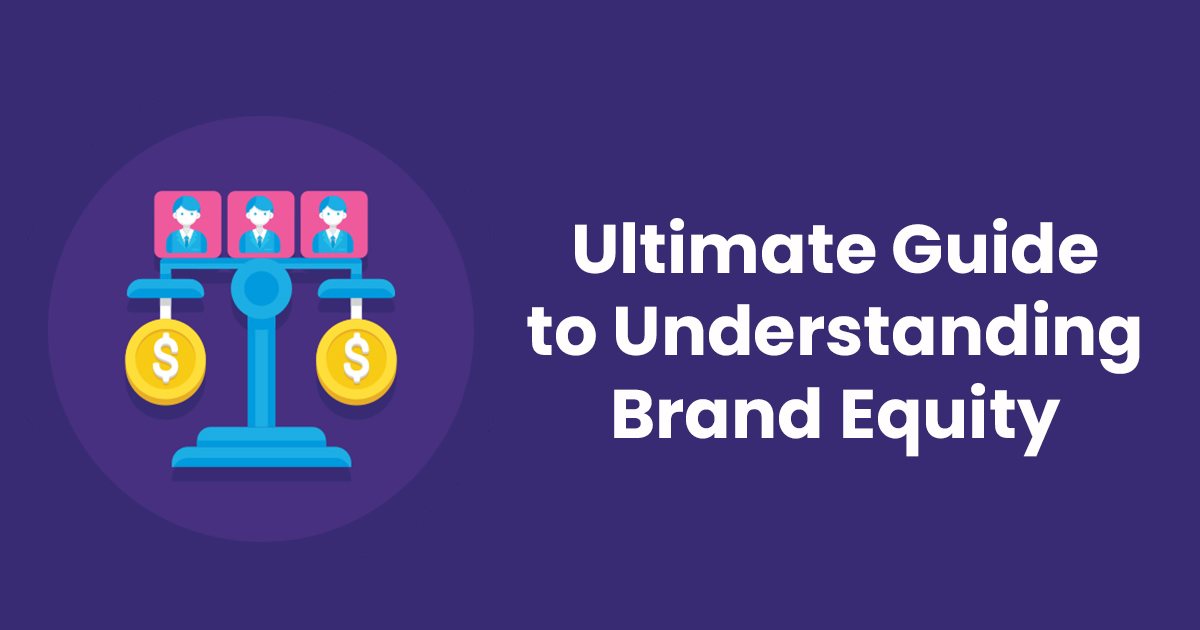
 symbols and slogans, and their underlying associations, perceived quality, name awareness, customer base and proprietary resources such as patents, trademarks and channel relationships. These assets, which comprise brand equity, are a primary source of competitive advantage and future earnings.
symbols and slogans, and their underlying associations, perceived quality, name awareness, customer base and proprietary resources such as patents, trademarks and channel relationships. These assets, which comprise brand equity, are a primary source of competitive advantage and future earnings.








